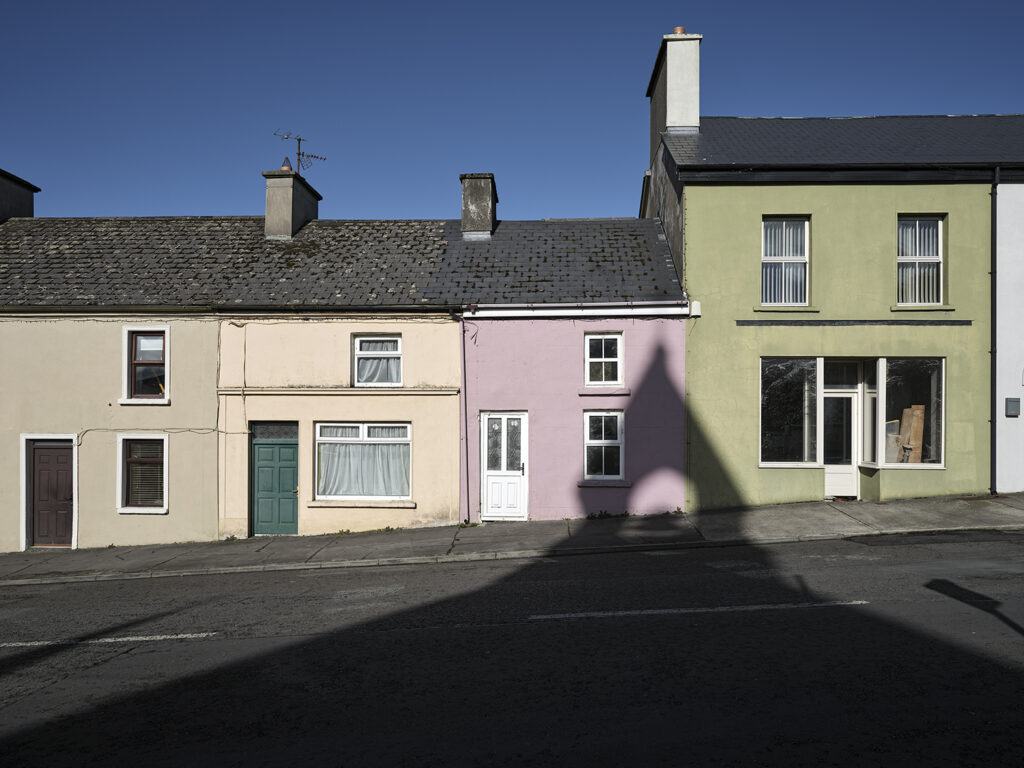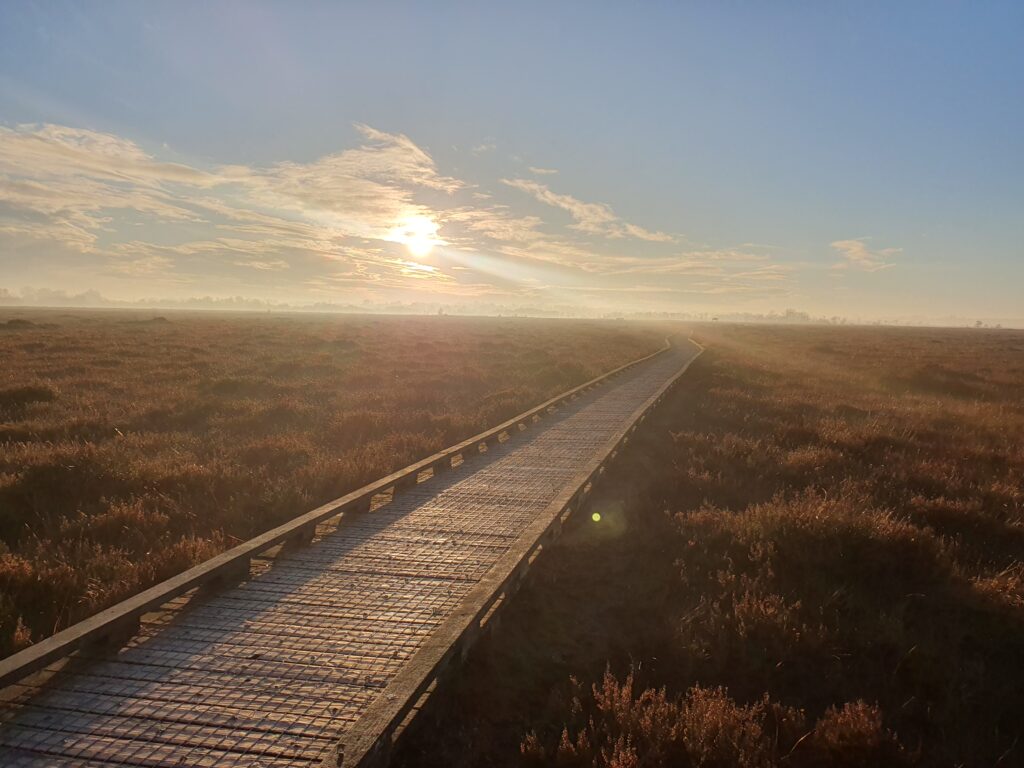21.12.23
This has been quite a year for the Irish Architecture Foundation.
In 2023, Nathalie Weadick stepped down as director, and, on May 23rd, a Tuesday, I took up that position. If the first director Shane O’ Toole founded the IAF, Nathalie determinedly established it. From its origins in 2005, the IAF has evolved to become Ireland’s national organisation for the advancement of architecture culture. It has had a profound and unique impact on how architecture is valued, experienced, and debated across Ireland and beyond. At the end of 2023, there can be no doubt the IAF is firmly a key part of the ecosystem of architecture in Ireland.
Certainly, the IAF has solid foundations. The IAF is core-funded by the Arts Council, the Department of Housing, Heritage and Local Government, the Office of Public Works, and Dublin City Council. This faith, funding and the security and confidence it provides have been fundamental to the IAF’s capacity to take risk, champion excellence and respond to audience desires and feedback. This year, the IAF, in partnership with the Housing Agency, won ‘Best Use of Creativity in the Community’ at the Business to Arts Awards for our ground-breaking exhibition and public discussion programme Housing Unlocked. IAF was shortlisted twice by the Thornton Education Trust in the Inspiring Future Generations Awards 2023 – for a ‘One-off Activity for Children’ for Open House Junior and the entire IAF shortlisted for ‘Best International Non-profit Organisation’ for our work with young people across all programmes. It is testament to the hard work of the IAF team and our partners that our work with and for a variety of audiences is now being both noticed and celebrated.

Igniting imaginations at a workshop at Open House Junior, now a three-day event at Open House Dublin 2023. Photograph by Ste Murray.
And audiences are growing and attendance for events is increasing. Since May we have attracted more radio and media coverage for key programs such as Open House Dublin and New Now Next than ever before. Hometown Architect and our national placemaking programme, Reimagine, continue to empower communities and architects right across Ireland to activate imaginations and advance projects that matter to them, where they live, for their future, supported by the IAF. In October, Open House Dublin expanded, growing from three days to nine, with an Open House Junior weekend now dedicated to the imagination of children and young people and their built environment, the first of its kind in any Open House in the world. For the next 30 months, funded by Creative Ireland, the IAF, with 12th Field, will work with peatland communities to co-create bog bothies as spaces for shelter, retreat, and deep engagement with this changing landscape.
There is no debate to be had, the appetite to turn up and participate is here. The IAF will continue to be fundamental to both growing and meeting this desire for architecture.
As the new director, I do not take these foundations for granted. But what is next for the IAF is not to stagnate nor become rigidly anchored, but instead to begin to build more room for architecture, and first, to erect a scaffold. Perhaps it is a cliché for an architect who leads an architecture organisation to suggest the next years of the IAF as a kind of scaffold, and yet, when you visualise it, it makes sense. To advance to the next stage of its own strategic journey and to sustain its audience impact, the IAF must remain an open and agile organisation, an organisation that actively works to build and maintain its relevance, strength, and integrity. Its programmes today and tomorrow – across festivals, placemaking, learning, exhibitions, digital and print publications – are tailor-made and distinct, yet must finally fit together, interlocking more completely into a robust and secure framework that expands and enhances architecture for all. This framework should provide inclusive support to audiences, and any and all others who have something to say or something to do to effect change in the built world.

Scaffold drawing 1 by Laurence Lord.
A scaffold also implies a kind of network or, as it is illustrated here, a field of action and activity. Already the IAF is a core player in several national and international networks which challenge us, driving our own critical and creative development. Open House Europe, Open House Worldwide and the LINA community are key collaborators and supporters. Since June our team has presented the IAF at the inaugural Open House Europe conference in Lisbon and at the Placemaking Week Europe in Strasbourg. The unique and varied work of the IAF is of increasing interest to others across the world, grounded and emboldened as it is by the international reputation of Irish architecture and our specific and unique culture of architecture.
Today the IAF is establishing new creative networks with organisations and individuals across Europe, South and North America, Africa, and Australia, building on worldwide interest in architecture from Ireland and a growing diaspora of architects and other practitioners who wish to connect and to participate in our shared architecture futures. Our more local networks also continue to grow, and the IAF is determined to strengthen our connections with Local Authorities and communities of interest in towns across Ireland in 2024. We will work too with our other partners and collaborators in the architecture ecosystem: the Irish Architectural Archive, the Architectural Association of Ireland, Architecture at the Edge, the Royal Institute of the Architects of Ireland and more. Within the IAF scaffold there is room for all; there is ample space to build, gather around a table for conversation and debate, no shortage of platforms for risk and imagination, and no desire to avoid society’s most challenging issues of housing, justice, climate, construction, and health, to which architecture has something significant and essential to contribute. The IAF is not in the business of deciding what is or what is not architecture. Rather, we lead our audiences to where individuals and organisations are embracing architecture to propel their creative, social, economic, and cultural lives now and in the future.

End of event selfie, ‘Cities Have Feelings’ with Malmö City Architect Finn Williams and artist and poet LionHeart. The event was part of NewNowNext, which for 11 years has been kindly supported by Arup.
Scaffolding is often used to provide shelter and temporary stages to present work to a gathered crowd, so, in 2024, the IAF will provide this too. We will direct specific support to emerging architects. Further to a successful architect exchange between Ireland and Sweden in November, next up is a residency opportunity with the Centre Culturel Irlandais in Paris in 2024. Across next year the IAF will establish a nimble and networked array of mentoring and other supports and opportunities. As an architect I understand advancing any culture of architecture demands that real attention be given to architects to take risks and explore their own creative potential, given their central role in conceptually and literally constructing culture.
Of course, all this work requires people and there are many to thank. I am so grateful to the work and support of the talented and dedicated IAF team that have welcomed me to the IAF this year. They achieve so much with grace, professionalism, and care. I am emboldened by a brilliant Board of Directors who have placed their trust in me and remain generous, intelligent, and unwavering in their belief in the IAF and its future. The IAF is fortunate to have many programme specific funders and supporters, including Creative Ireland and the Department of Rural and Community Development and Arup, and a network of loyal Friends who offer their support to the IAF and its programmes year after year. Thank you so much, and we all hope you can continue to support the IAF in 2024; we cannot exist without you.

The Random View: Ballycastle 2023. Photograph by Bob Negryn, copyright Bob Negryn. This photograph will be used as part of a new exhibition and two new films on the Irish town coming in 2024.
When I am asked to estimate an audience for architecture in Ireland, I say about 5 million people and counting. Audiences in architecture are not the same as others. This is because architecture literally impacts everyone because we all live, work and play in the real, designed and built world. While I realise that not everyone may want to engage directly with the work of the IAF – although all are welcome – I know that the work we do with and for communities of interest and our partners potentially impacts all 5 million. From a gathering of 25 people around an open table to discuss the future of Dublin city, to advocating for a better quality, more inclusive, and healthier built environment for 5 million through the National Policy on Architecture, in 2024, the IAF will continue to care for the individual and the collective, local and the national, the detail and the strategy. Architecture is magnificent, and it is to architecture we assign our duty of care.
It has been said that ‘the scaffolding must be removed once the house is built’, and a house – a home – for the work that we do and the audiences we do it for, is certainly on our horizon. For now, on these dark days, as the end of year approaches, and as we await the warm light of a new year, I and the IAF team hope that you and your loved ones have all the support that you need, and we wish you a safe and peaceful holiday season.
Emmett Scanlon

Bog Walk, taken as part of the Bog Bothy project, a 30-month project funded by Creative Ireland under the Creative Climate Action Fund. Photo by Bernardine Carroll, IAF.
Top photograph: Emmett Scanlon opens Housing and the City, held as part of Open House Dublin 2023. This was one of five Open Table conversations on Dublin held over lunch in the Curved Street Building, Temple Bar. Photograph by Ste Murray.
21.12.23
19.12.23